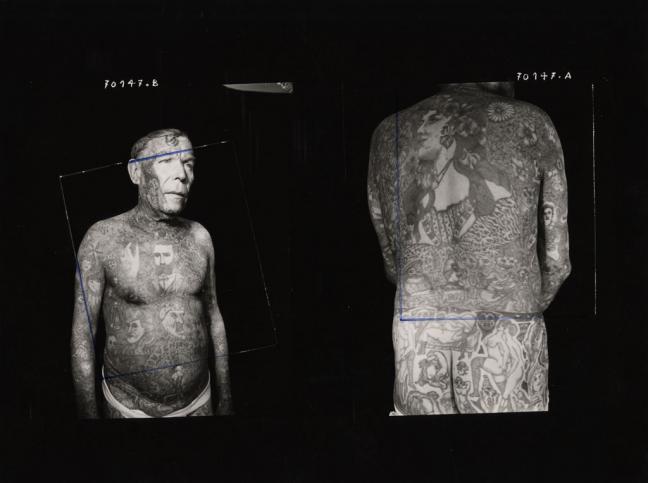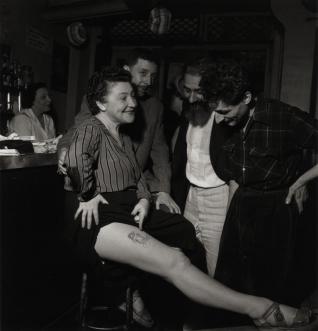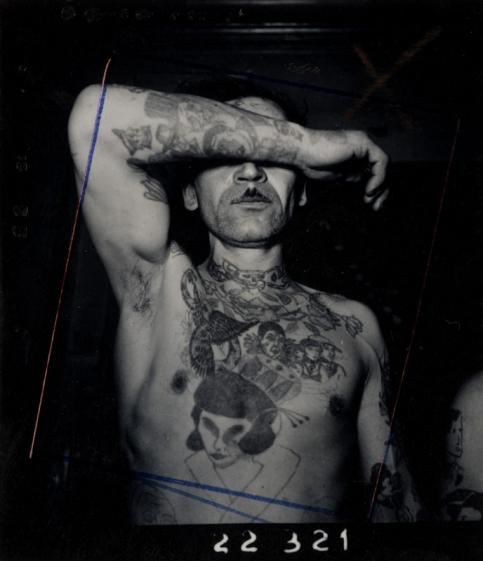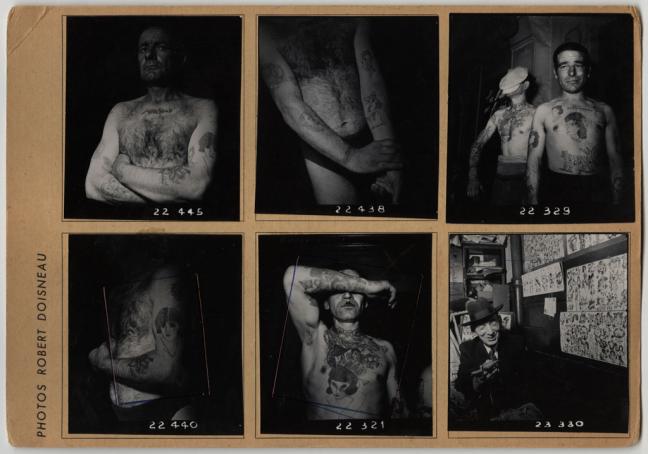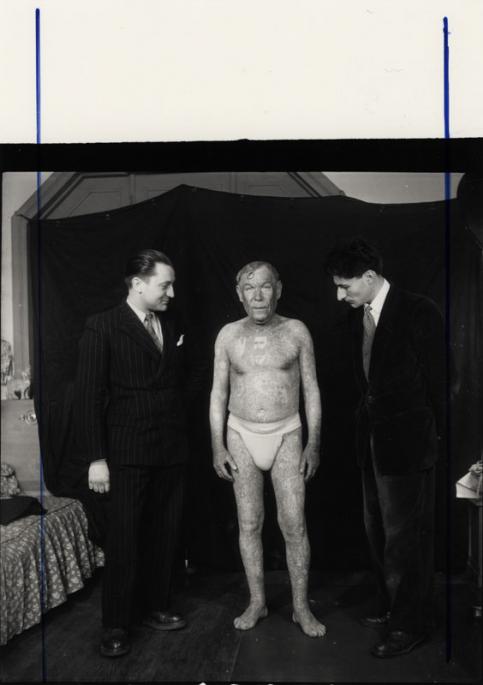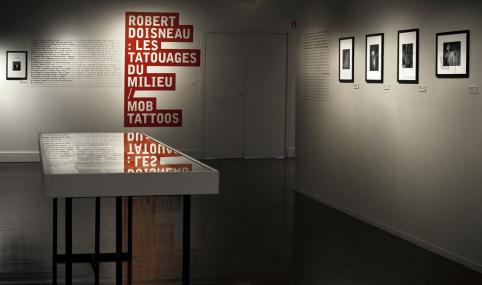Of all of the subjects covered by Robert Doisneau (1912-1994), one of the most atypical in his light-filled, poetic universe is that of tattoos and the tattooed.
For the first time ever, the musée Nicéphore Niépce is proposing an exhibition entirely dedicated to this subject, with 70 original silver prints, some contact sheets from the collections at the Atelier Doisneau and the Centre national des arts plastiques.
His friend Robert Giraud, writer and expert in Parisian low-life introduced him to these subjects in 1947. Doisneau was exposed to a world he wasn’t aware of with Giraud. “With Him, I met people on the edge. A group of individuals who lived outside the law. Bob loved to listen to prostitutes and pimps; I found the whole milieu a bit stupid. The whores talked about sex, that wasn’t my thing. But Vogue magazine’s “pseudo distinction” wasn’t my thing either; I had started to find the whole thing frustrating. In the end, I managed to treat my fashion photographer’s depression with my friend Giraud! ». Giraud was fascinated by tattoos and the stories behind them. Along with Doisneau and Jacques Delarue, a police inspector and ex-cellmate during the war, he toured the neighbourhood bistros of les Halles and the rues Mouffetard and Maubert looking for tattooed subjects for his book, Les tatouages du milieu that was published in 1950.
This little anthropological book shows the revolution that took place over half a century for body marking. At the time, tattoos were the almost exclusive preserve of delinquents, criminals and prostitutes, unlike today… It was a veritable language for a marginal population. With no other means of expression, they had their membership of a clan, their exploits, prison terms, love affairs, hatred or hopes tattooed on their skin. Each drawing was an internal code of recognition but also a form of auto-stigmatisation.
In keeping with Lacassagne’s 1881 investigation, Doisneau’s photo reportage illustrating the detailed study by Giraud and Delarue constitutes an eloquent account of the Parisian post-war underground.
« Richardo was the ultimate work of art, covered from head to toe, like walking wallpaper ».
Edmond Faucher (1884-1963), aka Richardo, exhibited his body for a living, Albert Londres nicknamed him the « living Gobelins » when he met him in Biribi prison in 1924. Giraud and Doisneau met him in the bistro des Cloches de Notre-Dame but it was hard to photograph him there. Instead, Doisneau brought him home to take the photographs to his family’s stupefaction.
Richardo ended his life in prison after stabbing someone for being a nuisance. Robert Doisneau claimed that in the « distinguishing marks » column on his passport it said « none »…
« Les Tatouages du milieu » is a chance for the musée Nicéphore Niépce to reaffirm its interest in French photography from the fifties, a genre that has been underestimated and looked down on for many years. It reinforces, if needs be, the central role played by Robert Doisneau in the history of photography, not as a genial storyteller, but as a conscious producer of images and a skilled practician.

This exhibition is possible due to the support of the Centre national des arts plastiques and the Atelier Robert Doisneau in Montrouge.

